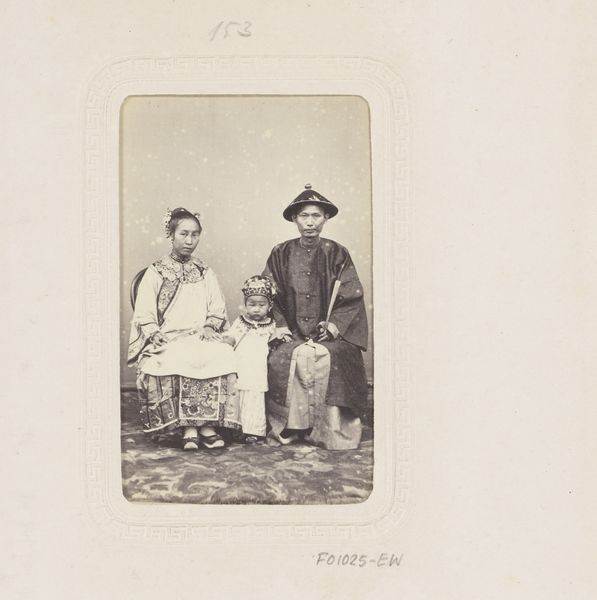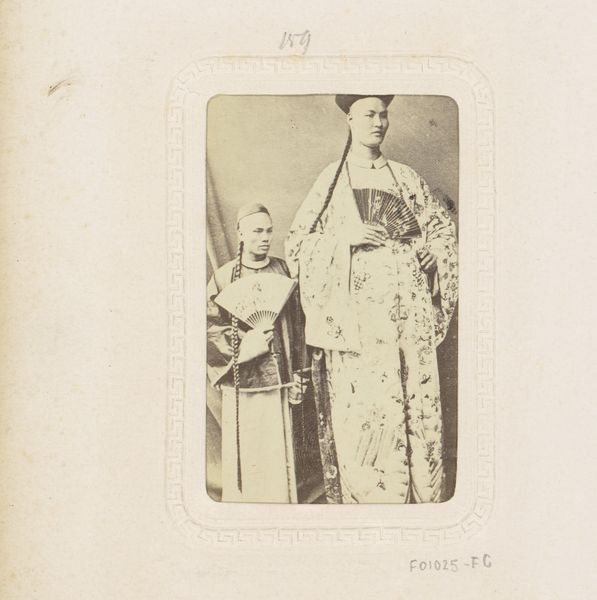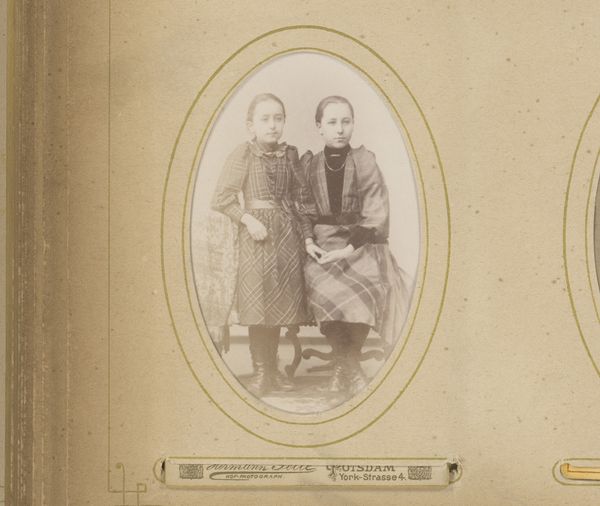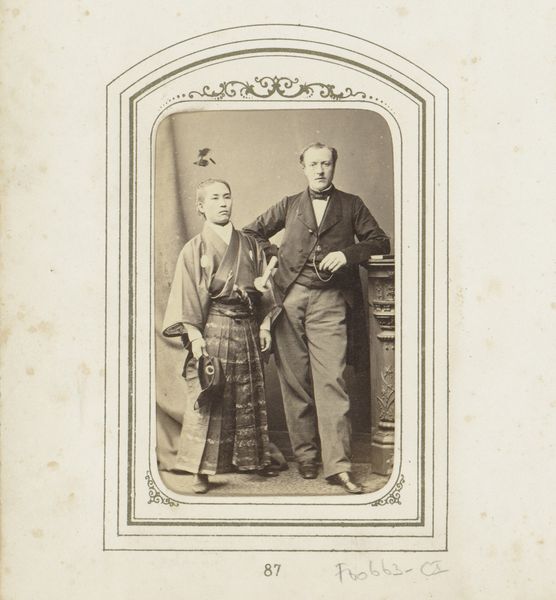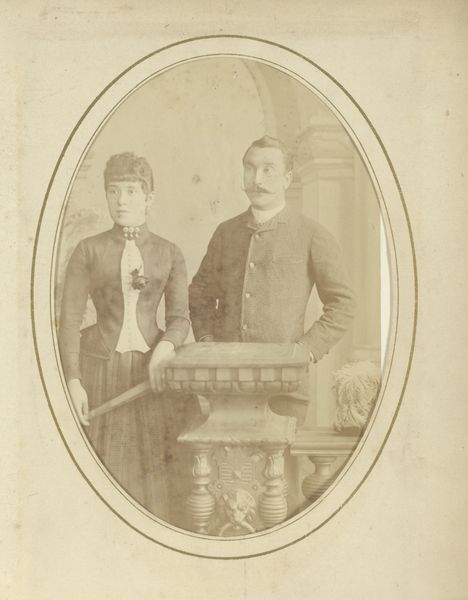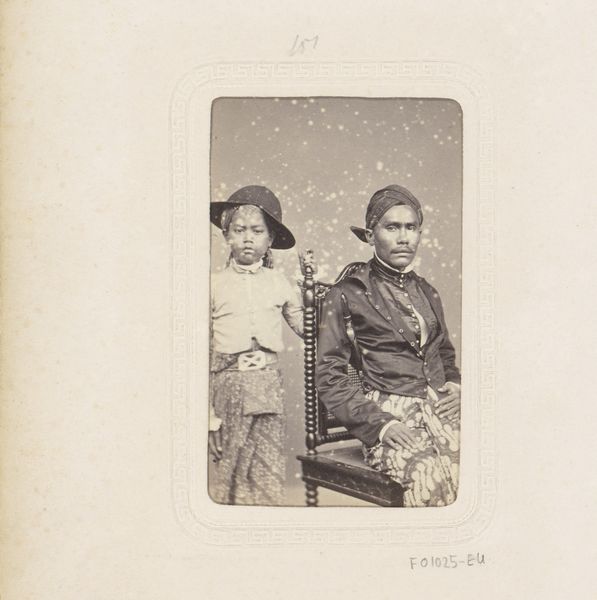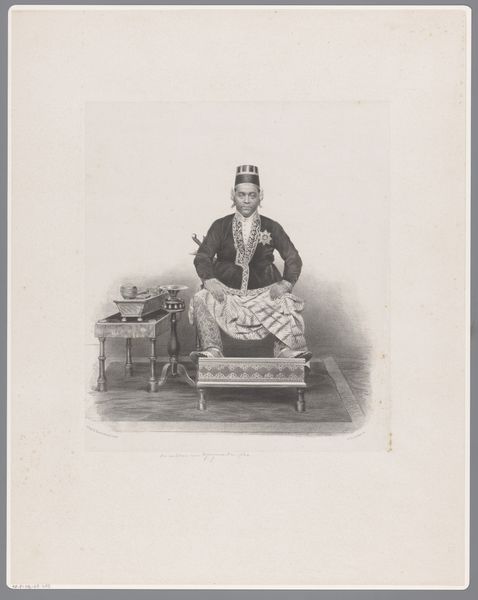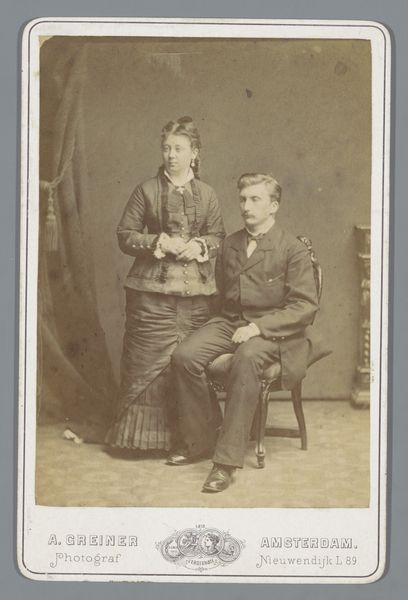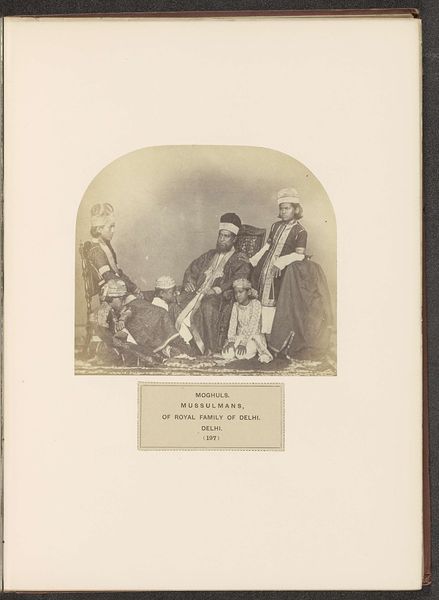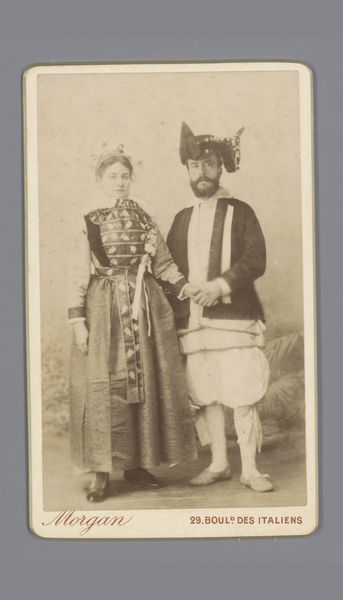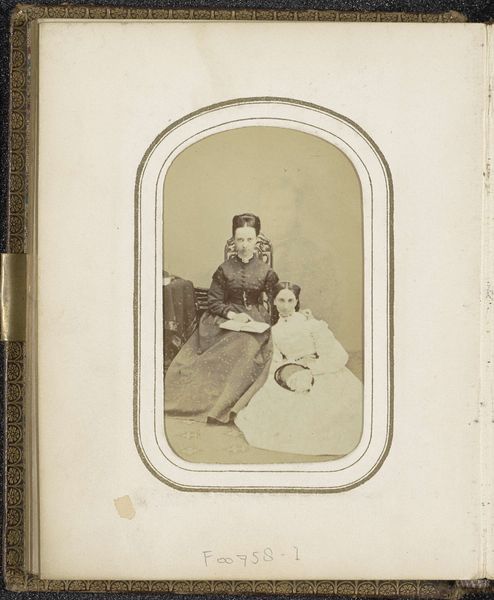
photography, albumen-print
#
portrait
#
african-art
#
photography
#
orientalism
#
albumen-print
Dimensions: height 85 mm, height 52 mm
Copyright: Rijks Museum: Open Domain
Curator: This is a fascinating albumen print from the late 19th century, dating from 1857 to 1880, titled "Portret van twee Indonesische mannen" created by the studio of Woodbury & Page. Editor: My first thought is that there's a powerful dynamic here. The textures, the light... there's an intimacy mixed with what feels like imposed formality. Curator: Indeed. The composition, while seemingly straightforward, is quite deliberate. Notice the contrasting poses. One man seated, the other standing with his hand resting on the seated figure's shoulder. Editor: That gesture is charged, isn't it? It could suggest support, but equally control. Given the history of Dutch colonialism in Indonesia, the power dynamics are palpable. How were Woodbury & Page situated in that colonial structure? Curator: Woodbury & Page operated commercially, catering to a European clientele and local elites. This photograph, typical of the Orientalist aesthetic, is staged to meet certain expectations of how Indonesians "should" appear. Look closely at the clothing. Editor: The intricate patterns on their sarongs jump out, but so does the uniformity of their velvet jackets. I can't help but wonder to what extent their cultural identities were curated by the photographers to fit European preconceptions. Curator: Absolutely. But let’s examine the details that transcend simple representation. The albumen process itself, how the light plays across the surfaces, gives the image a remarkable depth. The slight imperfections, those tiny spots, underscore its tangible nature. Editor: And they remind us that photography isn't a transparent medium. It is mediated, subjective, always bearing the fingerprints, literally, of its creators and the broader context of its production. So this portrait, seemingly benign, opens into a layered examination of colonial power. Curator: Precisely. It prompts questions about who controls the narrative and whose gaze we are ultimately viewing through. It's a simple yet rich reminder of the inherent complexities present in all forms of representation. Editor: A frozen moment in time, revealing much more than initially meets the eye. A dialogue, if you will, between form and history.
Comments
No comments
Be the first to comment and join the conversation on the ultimate creative platform.

